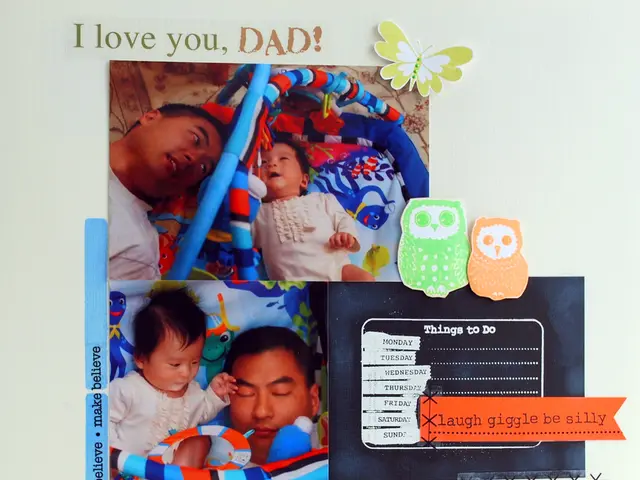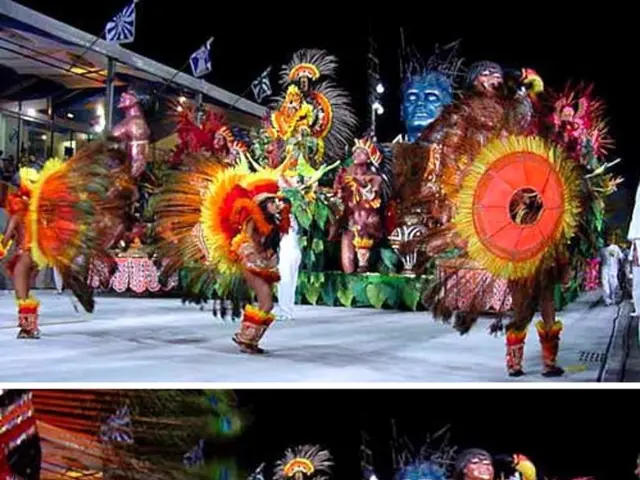Exploring Artistic Expressions: A Handbook for Discovering Your Distinctive Style
Revamped Guide to Art Styles:
Art ain't just about splashing colors or squiggling lines, pal. It's about expressing who the hell we are, decked out in colors and shapes. Each artist's got their own voice, shaped by their personal experiences and feelings. Findin' that unique voice is a journey filled with exploration and discoveries. This guide will help you navigate different art styles, encouraging you to get creative and experiment with new techniques.
The Lowdown on Art Styles
Understandin' the essence of art styles is key to findin' your own voice. Each art style tells a story. It reflects the thoughts, feelings, and experiences of its time. By checkin' out various styles, artists can discover what resonates with them. This voyage helps shape their personal expression and creativity.
The Big Picture Historically
The history of art is a wild, twisted ride. It shows how cultures and societies influence styles. Each period brings new ideas and techniques. Major historical moments shaped the art we see today. Take a gander at some key ones:
- Renaissance: Focused on realism and human emotion.
- Baroque: Known for dramatic effects and movement.
- Impressionism: Captured light and everyday moments.
- Modernism: Broke traditional rules and explored new forms.
Gettin' the picture of these periods helps artists appreciate the evolution of styles. Here's a table to help ya keep track:
| Period | Key Characters | Key Characteristics ||--------|----------------|----------------------|| Renaissance | Da Vinci, Michelangelo, Raphael | Focus on realism and human emotion, highly detailed and ideologically charged.|| Baroque | Caravaggio, Bernini, Velázquez | Dramatic lighting, spatial complexity, dynamic movement, emotional intensity.|| Impressionism | Monet, Van Gogh, Renoir | Capture of light, color, and atmosphere, loose brushwork, focus on everyday life and contemporary subject matter.|| Modernism | Picasso, Matisse, Kandinsky | Broke from traditional aesthetics, explored new color, space, and form, focused on abstraction and self-expression. |
The Inspirational Moves
Art movements are crucial in shapin' styles. They bring together artists who share similar ideas and goals. Understandin' them helps artists find their place in art history. Check out some notable moves:
- Surrealism: Explored dreams, the subconscious, and the strange.
- Abstract Expressionism: Focused on spontaneous and emotional expression.
- Pop Art: Blended popular culture and fine art.
- Street Art: Challenged norms and engaged the public in creative conversations.
Understandin' these moves helps artists connect to their influences. It aids in creatin' a voice that stands out.
Explorin' the Various Art Styles
Explorin' different art styles is a voyage of self-discovery. Each art style tells a unique story. Artists use different techniques to express emotions and ideas. Finding the right style can help you connect with your work deeper. Here's a breakdown to help you understand the main art styles. You can then choose one that clicks with you:
Realism
Realism brings life as it truly is. This style focuses on everyday scenes and ordinary people. Realist artists aim to depict subjects accurately. They often use detailed techniques to show textures, light, and shadow. The goal is to create a sense of real life.
Tips for workin' with realism:
- Get to know your subject.
- Spend time studying their features.
- Master the art of shading and lighting.
- Use plenty of details to create realistic textures.
Abstract
Abstract art breaks away from traditional representation. It uses shapes, colors, and forms to create somethin' outta this world. Instead of showin' reality, it focuses on emotions and ideas. This style allows for personal interpretation. Each viewer can find their own meaning.
Tips for workin' with abstract art:
- Let go of realistic representations.
- Experiment with shapes, colors, and textures.
- Pay attention to the emotional impact yer choices create.
- Allow yourself to play around and have fun.
Impressionism
Impressionism captures moments in time. This style focuses on light and color. Impressionist artists often painted outdoors. They used quick brushstrokes to create a sense of movement. The goal is to capture the essence of a scene rather than its details.
Tips for workin' with impressionism:
- Paint en plein air.
- Use a light palette and loose brushwork.
- Capture fleeting moments and emotions.
- Use plenty of colors, especially to show how light changes scenes.
Surrealism
Surrealism explores dreams, the subconscious, and the bizarre. This style combines reality with fantasy. Surrealist artists create strange and unexpected images. They aim to challenge perceptions of reality. Surrealism often features bizarre scenes and unexpected juxtapositions.
Tips for workin' with surrealism:
- Dream big.
- Let your imagination run wild.
- Challenge reality.
- Use symbolic images to create intrigue.
Personal Reflection and Growth
Finding your unique voice in art requires personal reflection and growth. This journey is about understandin' yourself. It involves explorein' what excites you. You discover what styles resonate with you. This process of self-discovery is essential. It can lead to a stronger connection with your art. Growth comes from both successes and failures. Embrace this journey to shape your artistic identity.
Identify Your Interests
Understandin' your interests is the first step in findin' your unique voice. Take time to reflect on what captivates you:
- What subjects do you enjoy workin' on?
- What colors excite you?
- Do you prefer realism or abstract art?
Make a list of your interests. This helps ya see patterns. Consider creatin' a mood board. Include images that inspire you. Collect pieces from different art styles. This can spark new ideas.
Evaluate Your Skills
After identifyin' your interests, evaluate your skills. Knowin' yer strengths helps ya grow. Look at yer current abilities.Consider:
- What techniques do you excel at?
- What skills do you need to improve?
- How do you handle criticism?
Be honest with yourself. This evaluation helps you focus on growth areas. Practice consistently. Use every experience as a learning opportunity.
Experiment with Techniques
Experimentin' with techniques is vital in findin' your unique voice in art. Tryin' different methods opens new doors. Each technique brings its own charm and challenges. This voyage helps ya discover what resonates with you. Embrace the process of exploration. It's not just about creatin' art, but also about expressin' yourself.
Mixed Media
Mixed media combines various materials and techniques. This approach allows for creativity without limits. You can use paint, paper, fabric, or even found objects. Here are some ideas:
- Start with a base layer, like canvas or cardboard.
- Experiment with different materials and textures.
- Use different mediums together, like paint and collage.
- Let go of perfection. Focus on the process.
Mixed media allows for endless possibilities, so have fun experimentin'!
Digital Art
Digital art is on the rise. Artists use tablets, computers, and software to create blazin' visuals. Programs like Photoshop offer numerous tools. Here are some benefits of digital art:
- Easy to edit and adjust.
- Wide variety of brushes and effects.
- No need for physical materials.
- Save and access multiple versions of your work.
Digital art is a flexible medium, so don't be afraid to experiment. There's no wrong way to create, as long as it resonates with you.
Traditional Methods
Traditional methods like drawing, painting, and printmaking have stood the test of time. Each method has its unique feel. Choose a medium you feel comfortable with. Here are some popular options:
- Watercolor: Transparent, flowing, great for capturin' nature.
- Acrylic: Versatile, vibrant, suitable for various styles.
- Charcoal: Dramatic, bold, works well for sketchin'.
Masterin' traditional methods builds strong foundations for art. Consistent practice, combined with a willingness to learn, leads to beautiful creations.
Findin' Inspiratin' Sources
Finding your unique voice in art is a journey. Inspiration sources play a crucial role in this process. They help shape your style and deepen yer understandin' of art. Discover where to find inspiration:
Nature and Surroundings
Nature offers endless inspiration for artists. Observe the changing seasons, the patterns on rocks, and the texture of tree bark. Take stoatin' walks in parks or forests. Sketch or photograph the elements that catch yer attention. Keep these images as reference when creatin' art.
Art History
Learnin' about art history is a treasure trove of inspiration. Study various artists, movements, and periods. This helps ya understand the evolution of styles and techniques. Check out these resources:
- Museums and galleries.
- Art history books.
- Online art documentaries.
- Educational websites focused on art history.
Immerse yerself in the world of art to deepen yer creativity and inspire yer own artistic growth.
Contemporary Artists
Contemporary artists push boundaries and challenge traditions. Check out artists like Banksy, Yayoi Kusama, or Jeff Koons to learn about new techniques and unconventional styles. Attend local art exhibitions or follow artists on social media platforms like Instagram to discover new trends and art movements.
Embrace the journey of self-discovery and let yer creativity shine through yer work. Your unique voice awaits you in the world of art!
- To find your unique voice in art, begin by exploring various art styles that resonate with you, including lifestyle, fashion-and-beauty, food-and-drink, home-and-garden, relationships, travel, education-and-self-development, and personal-growth.
- Understanding the key characteristics and historical period of each art style can help shape your personal expression and creativity, such as the realism of Renaissance artists like Da Vinci, Michelangelo, and Raphael, the dramatics of Baroque offerings from Caravaggio, Bernini, and Velázquez, the light-focused Impressionism of Monet, Van Gogh, and Renoir, and the self-expression of Modernists like Picasso, Matisse, and Kandinsky.
- Stepping into the realm of art movements can also provide inspiration, as Surrealists like Salvador Dalí, René Magritte, and Max Ernst explored dreams, the subconscious, and the strange, or Abstract Expressionists like Jackson Pollock, Willem de Kooning, and Mark Rothko focused on spontaneous and emotional effort, presenting an abstraction from traditional representation.
- Personal growth and self-reflection are essential on your artistic journey, and identifying your interests, evaluating your skills, and constantly experimenting with techniques like mixed media, digital art, and traditional methods will help nurture your unique voice in art.






